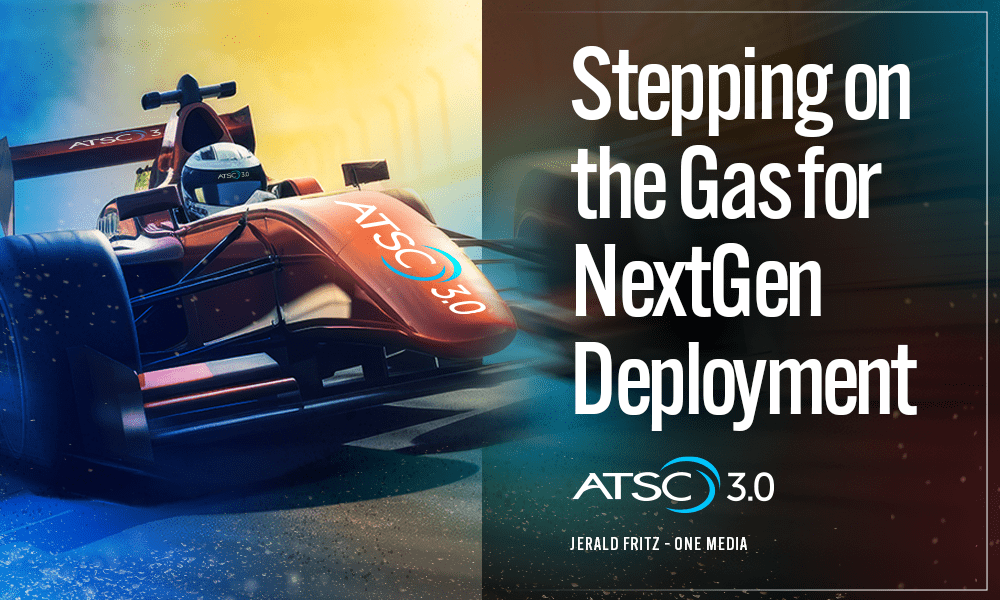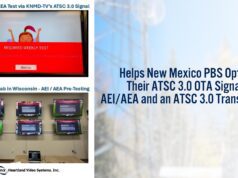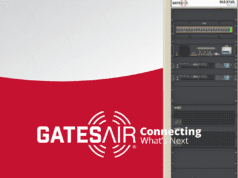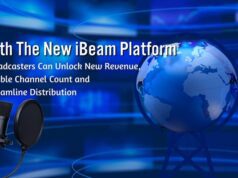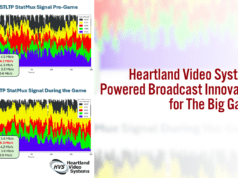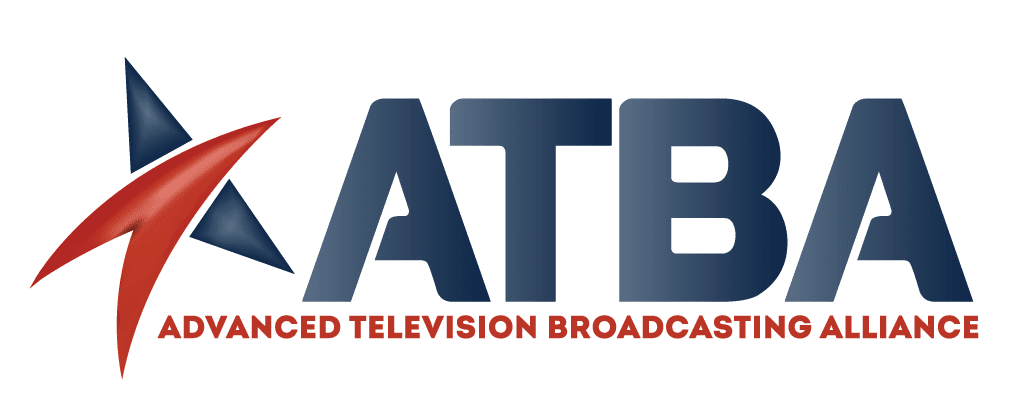It has been 11 years since the Advanced Television Systems Committee (ATSC) called for proposals to upgrade the current digital terrestrial transmission system (ATSC 1.0) to a significantly improved level – ATSC 3.0 (3/26/13). Just three years later, the combined broadcast and consumer equipment industries petitioned the Federal Communications Commission to adopt new rules approving the game-changing standard (4/13/16). The FCC issued proposed rules 10 months after that (2/2/17) with final rules effective in just over a year (3/2/18). Broadcasters then stepped up to deploy this innovative new service that now reaches over 75% of the country’s population while CE manufacturers have now provided well over 10 million TV sets enabled to receive the new tech.
I offer this historical timeline to reflect the tremendous progress of deploying a transformative platform in less than a dozen years. But so much still needs to be done to unlock the full potential of ATSC 3.0 for consumers as well as broadcasters themselves. Our company has been deep in the weeds of all aspects of the process from technical standard refinement to receiver designs and applications, station deployment, core network planning, international adoption, regulatory licensing, and developing business use cases. We still have much work to do. The full potential of the designs imagined 11 years ago is constrained by our inability to access pent up ATSC 3.0 capacity now dedicated to the exact same thing available to viewers using the current inferior standard, which may have been state-of-the-art for its time but has been dramatically eclipsed by newer tech.
Viewers, as well as broadcasters, need more. And we need it now.
To the Commission’s credit, it has endorsed a process that brings all players to the table for a plan to move forward. The Future of TV Initiative has the right focus from a regulatory perspective, but in the end, the process needs a jolt from all the players involved to unleash the potential of this revolutionary new technology. We need a sense of urgency.
What does that jolt look like? Four shocks:
- Accelerated NextGen TV deployment – a 1.0 sunset,
- Flooding the market with affordable/ubiquitous dongles,
- Offering better quality programming, and
- Demonstrating that money-making datacasting is here now.
Accelerated NextGen TV deployment. CTA predicts there will be 35M TV sets sold in 2028 plus 86M already sold by then. That’s over 120M sets in use. That’s a good starting point. But there is a symbiotic relationship between receivers and transmission. No manufacturers will pay to include 3.0 tech in devices unless there is something to receive and visa versa. Broadcasters need to commit to deploying the 3.0 standard and CE manufacturers need to march in sync to include the tech in their devices.
Q: How do we kick start that?
A: With a clear and unmistakable signal that there will be an end to ATSC 1.0 broadcasts.
Inertia has its own rules. The one constant is that nothing will change if there is no consequence. A clear “Sunset” date sends the message that there is an end in sight to the current inefficient 1.0 system. That will do much to encourage integration of 3.0 capability in multiple devices. Yes, there will need to be a bridge to help all consumers over the gap from 1.0 to 3.0 devices. That will likely involve 1.0 “Nightlight” service for a period of time and other potential assistance, but the signal lamp needs to be hung. And soon.
Affordable/Ubiquitous Dongles. The FCC’s key concern driving its complicated deployment regime is a requirement that broadcasters simulcast their content using the old transmission standard since many television sets cannot receive the more advanced NextGen Broadcast signal. One mechanism to help mitigate the problem of legacy sets is the availability of accessory devices that can receive the new signals. Unlike the converter boxes subsidized by the government coupons in 2009, converters can now be miniaturized to fit in much smaller devices. An aggressive plan to get more of these devices out in the market is essential and, in conjunction with the clear Sunset date, will be critical to boost production. This is the key to meeting the FCC’s primary reason for the simulcast requirement.
CE manufacturers are doing their part. The genius of profit-motivating opportunity has spurred development of multiple set top boxes, gateways and dongles. Efficient patent pools have been formed to provide reasonable rates and “one-stop shopping” for the essential intellectual property needed for the devices and there are incentive discounts that encourage an easier path to marketing these products. Indeed, there are $40 converters on the market today.
Flooding the market with these converter devices is the single most important activity that will meet the government’s concerns about protecting viewers. No one will be forced to abandon their 1.0 sets to watch over-the-air delivered programming if they have readily available and affordable devices that upgrade their existing devices to receive the new services. It is a necessary activity that will support the setting of the critical Sunset date.
The process can certainly be augmented with government or industry incentives and funding including subsidies, tax breaks or grants aimed at lowering the cost of production. Combined with retailer partnerships to promote and distribute these devices, this support will increase accessibility and reach a wider audience. Offering incentives to retailers, such as discounts or marketing assistance, can encourage them to prioritize the sale of dongles and educate consumers about their benefits.
Better Quality Programming. Consumers need a reason to buy new products. There is no better reason than to entice them with stunning visuals and enhanced audio for the content they watch. Transmissions using High Dynamic Range (HDR) video provide exceptionally vibrant contrast and colors with spectacular brightness and depth. The video images are breath-taking and remarkably closer to what the human eye experiences in real life. It brings the over-the-air viewing experience on par with the highest quality streaming services. HDR content is already being offered by major streaming platforms as it provides more realism and depth for a cinematic viewing experience. When it comes to live events, especially sports, HDR really brings the action to life with vibrant contrasts between the field, the players, fans, and the outdoor scenery. Although HDR is often included with newer 4K Ultra High-Definition content, HDR included with full high-definition content also provides similar outstanding improvement in visual quality.
Adopting HDR can give broadcast networks a competitive edge in the increasingly crowded media landscape and keep pace with streaming alternatives. The good news is that virtually all network programming can be broadcast today in native HDR. The more programming broadcast this way, the more consumers will flock to watch it.
It should be an absolute priority for all program producers.
Datacasting Monetization. Datacasting isn’t just a buzzword – it’s the future. If broadcasters are to continue to serve the public with free over-the-air signals, including news, sports and other highly desirable programming, broadcasters must adapt as viewers migrate away from traditional linear television.
Enter datacasting. This has been a part of the “digital promise” since broadcasters converted from analog transmissions and has been anticipated by regulators and broadcasters alike for many years. Developments to-date justify analysts’ predictions that, in the next decade, broadcasters will develop a third revenue stream as robust as advertising and retransmission fees for the content we produce or license – which is essential to ensuring broadcasters can continue to serve their viewers and the public interest.
Connecting multiple NextGen-transmitting stations with potential customers in need of diverse datacasting capacity is a critical new but economically rewarding challenge. Never before have we had the ability to connect a network of television stations as a distribution platform. Stations existed as islands – separate, independently addressable, disparate entities. We now have the ability to link them. That end-to-end infrastructure now exists. Cutting-edge broadcasters are now completing the design, build, and operation of an innovative and interconnected broadcast platform intended to provide a wireless broadcast backbone for IP data delivery across the country.
So what are these first datacasting use cases?
- Content Distribution Offload. Well over 80% of all consumer Internet traffic today is for video with more than 1.1 million minutes of video streamed or downloaded every second. Those are one-to-one events. In other words, streaming a 1 GB movie to 50 million people would consume 50 million GB of spectrum capacity. That’s extraordinarily inefficient when compared to the one-to-infinite broadcast architecture that could cover all 210 Nielsen markets with a collective 210 GB. For the math aficionado reader, that’s using a mere 0.00042% of the broadband streaming model. If Netflix or some other streaming service wants to complement its data offloading options – viewing NextGen Broadcast as a content delivery network extension – renting broadcast bits to provide the exact same service at a fraction of the expense seems to be a worthwhile pursuit.
- In-vehicle video entertainment enhanced and telematics. The NextGen Broadcast system is uniquely designed to synergize OTA broadcast and broadband 5G services. Nowhere will this be more immediately beneficial than in automobile servicing. Connected vehicles are rolling computers that need servicing. Using NextGen Broadcast capabilities, providers of data services to vehicles will be able to deliver software updates simultaneously to an infinite number of Internet of Things devices in their smart vehicles to upgrade software for new functionality, infotainment, bug fixes, and navigation. Safety updates can be delivered within hours, not days. Services can be provided to hundreds of thousands of devices instantly and simultaneously with no network slowdowns since broadcast architecture is not subject to cell phone network bottlenecks. Live updating of 3D mapping, for example, requires huge amounts of data so that autonomous driving vehicles don’t bump into things. You can’t do that with WiFi. You can’t do that via a spotty cell phone system. You can do that through a robust, one-to-many broadcast system. Broadcasters with complete access to their NextGen IP capacity will be perfectly positioned to provide those needed services.
- Position/Navigation/Timing and Advanced Emergency Alerting. The broadcasting industry is in a powerfully unique position to provide critical infrastructure support to augment national security. NextGen Broadcasting can provide Position, Navigation, and Timing datacasting services covering the entire country as an alternative to any potential compromise of the satellite-delivered GPS system. This is a fundamental capability designed into the NextGen Broadcast standard. Similarly, Advanced Emergency Alerting capabilities are an integral part of the ATSC 3.0 standard permitting broadcasters to enhance emergency content with detailed, rich video and graphics tied into newsrooms that will significantly supplement the simple crawl warnings sent to receive devices today. The Public Interest benefits of these datacasting applications cannot be overstated.
- Augmented GPS. Aside from the critical national security enhancement features enabled by the Broadcast Positioning System currently under evaluation by the government, broadcasters can be at the center of the fast-growing commercial Positioning, Navigation, and Timing market. Using a trivial amount of a station’s NextGen digital capacity, these enhanced GPS services can provide vast improvements to location accuracy for an unlimited number of users, vehicles, and devices – all at a small fraction of the cost of existing services. These new service offerings will support dozens of use cases, including Internet of Things applications, autonomous vehicle tracking, precise drone delivery, and emergency response.
- Interactive Music Channels. Using just a fraction of their spectrum capacity, a NextGen Broadcaster could offer 150 audio channels. In addition, NextGen Broadcast capacity can be used to host “virtual” music channels. Pie in the sky? The global music streaming company, ROXi, demonstrated at CES this year America’s first ever fully interactive free music channels to U.S. TVs including music, karaoke and music games. It is a key example of non-video datacasting use case that provides revenue to stations – NOW.
Make no mistake: broadcasters are at an existential pivot point in time where the fundamental basis of our industry is at stake. We must adapt to an increasingly competitive advertising market, an increasingly competitive viewership market, and the decline of traditional linear television. Fortunately, we’ve met the technological challenge to keep our businesses relevant – NextGen Broadcasting provides the essential tools and opens up new ways for broadcasters to serve their viewers as well as new revenue streams that capitalize on new uses for our spectrum. Broadcasters are about to reap the benefits of datacasting. As others understand this potential, the process of jump-starting NextGen Broadcast deployment will receive a much-needed spark.
Combining these four jolts of acceleration will light the path to fully realizing the NextGen Broadcast promise.





